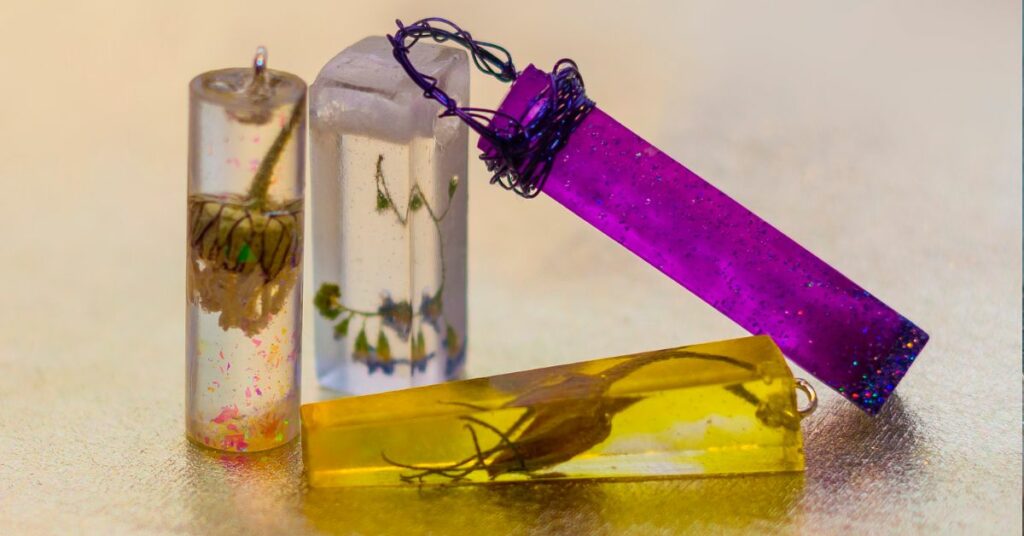Molds are one of the most crucial things one needs should one want to work with custom resin projects. You can find several types of molds on the market, the main ones being silicone and plastic, the former being the more popular choice for most hobbyists.
Silicone molds are a bit more advanced than plastic molds, but they are nowhere near as complicated as some people seem to think. Sure, things may get a little messy the first few times, but once one gets accustomed to curing silicone, the process becomes much easier.
If you are doing market research on resin molds, this article will help you understand why silicone molds are great for resin.
Silicone molds are flexible molds made using uncured, liquid silicone, usually the RTV variant. You can also find malleable silicone molds which have the consistency of baking dough. Such materials can easily take the imprint of existing objects, which you can then fill with resin to make a new item.
While the malleable silicone molds are easier to use, people generally prefer the liquid silicone version. Uncured liquid silicone has a thick honey-like consistency. These molds can perfectly copy 3D imprints of the object one wishes to cast.
There are several benefits of using silicone molds over plastic molds. And it’s not just limited to resin. You can use silicone molds to cast custom wax candles and even concrete. Below is a list of key characteristics that make silicone mold the superior choice for casting:
Silicone molds are durable, and they can withstand a lot of abuse before losing their shape. Such quality is extremely useful when casting custom resin. Hardened resin is usually very sturdy, so pulling it out from a mold is somewhat difficult without damaging the mold itself.
That’s usually the case with plastic molds. Plastic molds aren’t nearly as resilient as silicone rubber molds. So, using them repeatedly can wear them out. Even experts in resin casting will need to cycle through a couple of plastic molds every week.
In addition to all of that, silicone molds have very high scratch resistance. That means your finished project will come out much smoother than a reused plastic mold. Plastic molds, in general, have a tendency to accumulate scratches quite fast.
High durability alone isn’t enough to justify the popularity of silicone rubber casing. As you all know, silicone has high elasticity. That allows it to get its original shape back easily. Such quality is extremely helpful for resin casting because that essentially allows one to forcibly drag out the molded object through a smaller orifice on the mold.
The high elastic quality sets silicone molds apart from their plastic counterparts. Plastic molds don’t really work with highly detailed designs. Even if they do, you’ll either need to use a two-part mold or break the mold to bring the item out.
Using a two-part mold is fine, but that’ll leave a noticeable convergence line on the finished product. You’ll need to sand that down to get a proper finishing. While that’s not a big issue, it introduces a new step into the creation process.
Thermal stability is a common quality of silicone products in general. But it is an important trait for a mold because it opens up more options for the creator. Having a heat-resistant mold will let you cast using hot material.
Some resins are also easier to handle when you heat them. Heating the resin before pouring will also reduce the bubbles. Less bubbles in your finished item means it’ll be smoother with fewer imperfections. For those of you wondering about the operating temperature of silicone molds, it’s generally between -30°C to 200°C. But for most resin casting projects, you won’t reach temperatures that high.
Silicone molds usually have a non-stick surface, which makes it much easier to extract finished resin once it hardens. Plastic and metal molds always have at least some roughness to them. That’s especially true if you have cheap molds. Such roughness lowers the quality of the finished product.
The smooth surface also prevents the mold from tearing under stress when you try to pull out the finished resin.
Much like metal and plastic molds, silicone molds are also reusable. In fact, silicone molds are chemically safer than plastic and have almost no environmental threat because they are inert. It’s also super easy to get into the nooks and crannies of silicone molds to clean them out thoroughly. That’s something you can’t do with plastic molds.
You can clean silicone molds by washing them with regular soap and water. It’s usually better to use warm water, but that’s not a hard requirement.
There aren’t any strict rules about what type of resin you use in a silicone mold, because they can generally handle most things. We’ve even tested using hot glue, candle wax, and even concrete to see how much abuse silicone molds can take. The results came out surprisingly positive.

Nevertheless, there are a few best practices when it comes to using resin. In most cases, you’ll want to use UV resin for your small and medium projects. UV resin cures faster and is generally the best choice for beginners. When making the silicone mold for UV resin, it’s usually best to not use colors. Transparent molds make UV resin cure faster.
You can use colors when making silicone molds for epoxy resin. This type of resin takes a while to cure, but the finished products are generally high quality. Here’s a short guide on how to make a custom Silicone mold.
Now you know why silicone molds are great for resin. Silicone is a versatile material that can handle stress and temperature very well. They are also flexible, so it’s easy to extract cured resin from Silicone mold. We hope this information helps. Feel free to contact us if you have any questions.